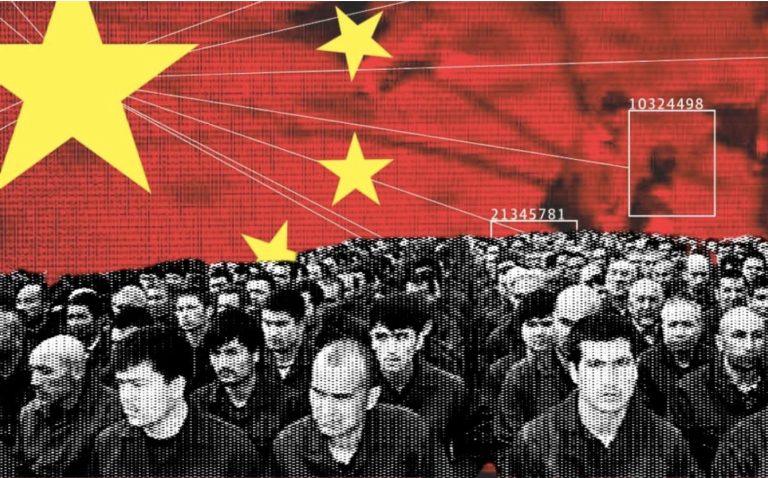Today, May 29, 2025, prominent global media outlets such as The New York Times, Der Spiegel, and the International Consortium of Investigative Journalists (ICIJ) published new, comprehensive, detailed, and concretely evidenced reports on China's forced labor policies in East Turkistan. These recent developments build upon previous reports indicating that the forced labor issue faced by Uyghurs and other Turkic Muslim minorities in East Turkistan is not merely an ongoing problem, but one that is continuously gaining new dimensions and deepening. These joint reports once again confirm that these inhumane practices, systematically denied by the People's Republic of China for many years, are now documented with irrefutable evidence. Furthermore, the issue has transcended being a mere regional problem to become a crisis requiring urgent intervention concerning global supply chains, international law, and universal human rights norms.
The new reports reveal that the transfer of Uyghur workers to factories within East Turkistan and in other Chinese provinces is not a simple labor dispatch. Instead, it is a meticulously planned, organized, and extensively implemented state policy. The mass nature of these transfers aligns with N-TV's earlier reports, which stated that tens of thousands of Uyghurs were sent to work. It is strongly asserted that the real motivation behind this process is not economic development but rather to erode the Uyghurs' cultural identity, eliminate their religious practices, weaken family ties, and transform them into assimilated individuals loyal to the Chinese Communist Party's ideology. These "labor transfers" are often carried out without individual consent, through various forms of pressure, threats, deception, and even punitive methods such as detaining family members in "re-education camps," with direct transfers from these camps to factories frequently reported. The Chinese government persistently presents these programs under the guise of "poverty alleviation" and "vocational training." However, independent research and witness testimonies show that this narrative does not reflect reality; instead, Uyghurs are torn from their lands and traditional lifestyles and forced to work in low-wage, precarious jobs. It is noted that most "vocational training" classes focus on ideological indoctrination and Mandarin Chinese instruction, far removed from imparting genuine vocational skills. This situation suggests that the true aim of these programs is to fundamentally change the socio-cultural fabric of Uyghur society and implement a form of cultural genocide.
The working conditions detailed in the reports fall far short of international labor standards. Video materials from The New York Times and other testimonies confirm that Uyghur workers are often subjected to excessively long working hours, inhumanely low wages, and unhealthy and unsafe working environments. Factories and worker dormitories are surrounded by a strict surveillance and control network; even the most basic rights such as freedom of movement, communication (especially with the outside world and their families), performing religious duties, and speaking their native language are restricted or entirely denied. This situation creates severe psychological pressure on workers, driving them to despair and hopelessness. The advanced technological surveillance systems established by the Chinese state in East Turkistan, and increasingly extended to factories employing Uyghur workers in China's interior regions – such as facial recognition cameras, GPS tracking, mandatory mobile apps, and biometric data collection – constitute another dimension of this pressure. Every step of the workers is monitored, and the slightest "disobedience" or "suspicious" behavior can lead to severe punishment. This digital totalitarianism completely eradicates individuals' private lives and creates a constant climate of fear.
Although Uyghur forced labor was initially associated more with East Turkistan's primary production sectors of cotton and textiles, recent reports – particularly The New York Times report (dated May 29, 2025, in the source) revealing forced labor allegations in the seafood supply chain – show that this problem has spread to a much wider range of industries. Serious concerns are arising about similar practices in different sectors such as automotive parts, electronic components, solar panels, and even food processing. The Bureau of Investigative Journalism's report, titled "China's Economy Built on Uyghur Forced Labor," strikingly reveals the general prevalence of this problem in the Chinese economy and how deeply international brands' supply chains may be entangled in these human rights violations. This situation increases the risk of global brands and consumers unknowingly becoming complicit in these human rights violations. Many international companies claim there is no forced labor in their supply chains or state they lack sufficient information. However, conducting reliable audits has become nearly impossible due to state control over independent audit mechanisms in China, a lack of transparency, and witnesses' fear of speaking out. Regulations like the U.S. Uyghur Forced Labor Prevention Act (UFLPA) place the burden of proof on companies, compelling them to prove their products are made without forced labor. However, such legal regulations need to be widespread globally and effectively implemented.
Since its establishment, the government of the People's Republic of China has systematically denied all allegations of human rights violations in East Turkistan, labeling them as "Western powers' interference in China's internal affairs" and a "campaign to slander anti-terrorism efforts." The Beijing government conducts sophisticated disinformation campaigns to mislead international public opinion, using fake witnesses and propaganda films that create an image of "happy Uyghurs." However, this denial policy contradicts satellite imagery, leaked official documents, thousands of witness testimonies, and academic research. Contrary to its claims, the Chinese government obstructs free and unconditional access for international independent observers and researchers, led by the United Nations, to East Turkistan. Rarely permitted visits are tightly controlled and limited to pre-determined, "sanitized" areas. Despite this, many courageous academics, journalists, and human rights defenders, taking great risks, are struggling to uncover the truth through remote sensing technologies, open-source intelligence, analysis of leaked documents, and interviews with diaspora members. Despite all of China's obstruction efforts, these independent researchers, including those whose work was published today, have largely succeeded in proving the functioning and scale of the forced labor system and have debunked the Beijing government's denials.
Uyghur forced labor, reaffirmed by the new reports, is one of the most serious human rights crises facing humanity in the 21st century. China's denial policies and obstruction of independent research further increase the international community's responsibility in this matter. Governments, international organizations, companies, and civil society must take concrete steps to end this systematic persecution. These steps should include global sanctions against goods produced with forced labor, binding due diligence obligations for companies, the establishment of mechanisms to ensure perpetrators are held accountable before international law, and increased coordinated diplomatic pressure on the Chinese government. Silence and inaction will mean condoning the continuation of this crime against humanity. For the sake of universal human rights and humanitarian values, urgent and decisive international intervention is essential.

